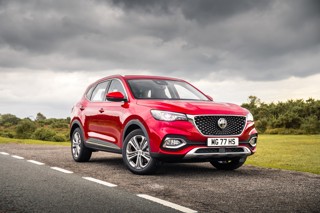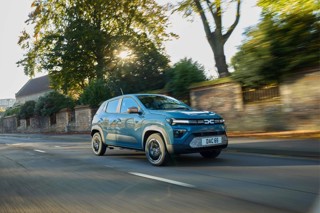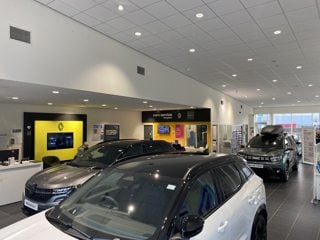Retailers can play a pivotal role in accelerating the adoption of electric vehicles (EV) by acting as guides, providing reassurance, and actively addressing consumer concerns.
Speaking at the Auto Trader What's New On The Road To 2035 webinar, Euan Cameron, marketing director for Peter Vardy, discussed the complexity of promoting electric vehicles (EVs) from a retail standpoint.
Cameron noted that retailers needed to adapt to changing market dynamics, citing a shift in consumer interest influenced by factors such as fluctuating fuel prices. He reported that during periods of fuel price increases, capturing consumer interest in EVs was far easier, resulting in a surge in leads. However, he acknowledged that the increase in new vehicle models coming into the market at a time when the overall number of leads was falling presented a new challenge for retailers.
To enhance consumer engagement with EVs in those more challenging trading periods, Cameron recommended that retailers develop strategies for guiding potential buyers through the decision-making process.
Cameron proposed that instead of solely focusing on generating leads, retailers should now be acting more as guides, assisting potential car buyers considering EVs in navigating through their decision-making journey.
He stressed the importance of addressing concerns, such as range anxiety, and offering examples that consumers can relate to in their everyday lives.
One of the key aspects Cameron highlighted was the need to address the perceived high initial cost of EVs compared to traditional internal combustion engine (ICE) vehicles.
By asking pertinent questions, such as whether consumers can charge the EV at home, retailers could, he said, effectively highlight the potential savings in ownership costs.
Cameron illustrated this with a practical example, demonstrating that, with the right energy tariffs at home, consumers could save a significant amount on monthly fuel bills, making EV ownership more economically viable.
Citing the example of a MG4 with monthly repayments of around £320, he said that realistically a car driver could expect to save bewteen £120-£130 a month on fuel bills with the right tariff and similarly save around £20 per month on tax.
“By trying to put real world examples to people around the cost side of things and also range anxiety and tackling those questions, that will help move people along the EV consideration funnel and then converted.”
Cameron also acknowledged that conversation around EVs often centre on the unfamiliarity with the brand itself. Recognising this, Cameron suggested that retailers address such concerns by providing reassurance and pertinent information about the brand's background and track record on their websites.
By leveraging such information, retailers could build trust and reassure consumers about the safety and reliability of newer entrant brands.
As an illustration, he referred to the Chinese brand GWM (Great Wall Motors), noting its 40-year history and historic global sales figures. Additionally, Cameron pointed out that new entrants often offer competitive warranty packages, further bolstering consumer confidence in the longevity and dependability of EVs.
When questioned about customer quality complaints for EVs compared to traditional ICE vehicles, Cameron said that contrary to common perceptions, EVs did not generate anywhere near the same levels in complaints, attributing this to the longer warranties and reduced complexity in moving parts associated with EVs.
£The fact that there has been a gap in the new car market or nearly new market has made a lot of retailers stock older vehicles and that has caused far more levels of complaints because they're having to retail an older higher mileage vehicle,” he said, adding, “I think we can all be pretty confident that these EVs will give us far less issues.”
With the entry of 52 different brands into the UK, Cameron theorised that the critical factor in this EV landscape where some brands may not be able to coexist would revolve around the number of model lines and derivatives each brand offered.
By citing the example of established brands like Ford discontinuing models like the Fiesta, Cameron suggested that new entrants may strategically position themselves to fill these gaps.
“That's where some of the new entrants will be able to come in and therefore a higher number of brands will probably be okay because they're just going to slot into different parts of the market.”





















Login to comment
Comments
No comments have been made yet.